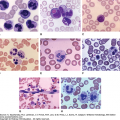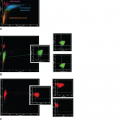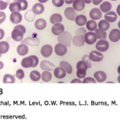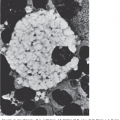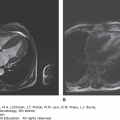INTRODUCTION
SUMMARY
This chapter outlines the major categories of lymphocyte and plasma cell disorders.* The disorders are classified into three main groups. The first is composed of diseases caused by defects intrinsic to lymphoid cells. The second is caused by disorders that result from factors extrinsic to lymphoid cells. The third is composed of disorders caused by neoplastic or preneoplastic lymphoid cells and are outlined in Chap. 90 using the World Health Organization classification of tumors of lymphoid tissues. The clinical manifestations of diseases in any one of the three groups may be difficult to distinguish, but this grouping can provide a framework with which to proceed in evaluating patients with known or suspected lymphocyte and plasma cell disorders. This chapter introduces the framework and presents a roadmap to other chapters in this book that discuss each of the disorders in greater detail.
Acronyms and Abbreviations
GVHD, graft-versus-host disease; Ig, immunoglobulin; NK, natural killer; SCID, severe combined immune deficiency; Th, T helper; TREG, CD4+ regulatory T cell.
*This chapter was prepared by Thomas J. Kipps in the 8th edition and much of the text has been retained.
CLASSIFICATION
Lymphocyte and plasma cell disorders can be classified into three major groups (Table 78–1). The first group, listed under “primary disorders,” is composed of lymphocyte disorders caused by intrinsic defects in lymphoid cells that result in functional abnormalities of marrow-derived (B) lymphocytes, thymic-derived (T) lymphocytes, combined T and B (impaired humoral and cellular immunity), or natural killer (NK) cells. These disorders primarily result from inborn errors in lymphocyte metabolism (Chaps. 73 to 77 and 80) and/or receptor–ligand expression (Chaps. 17 and 80). The second group, listed under “acquired disorders,” consists of disorders caused by factors extrinsic to lymphocytes resulting in immune dysfunction. These conditions most commonly result from infection with viruses, or other cellular pathogens (Chaps. 79, 81, and 82), but they also may be caused by bacteria, drugs or systemic disease of nonlymphoid cells. The third group of diseases is composed of preneoplastic and neoplastic lymphocyte disorders and is discussed in detail in Chap. 90.
I. Primary disorders A. B-lymphocyte deficiency or dysfunction (Chap. 80)1,2 1. Agammaglobulinemia a. Acquired agammaglobulinemia3 b. Associated with plasma cell myeloma, heavy chain disease, light chain amyloid, Waldenström macroglobulinemia, or chronic lymphocytic leukemia (Chaps. 92 and 107–110)4,5 c. Associated with celiac disease6 d. X-linked agammaglobulinemia7,8 e. Autosomal recessive agammoglobilinemia9 f. Common variable immunodeficiency10 g. Transient hypogammaglobulinemia of infancy11 h. Bloom syndrome12 i. Comel-Netherton syndrome13 2. Selective agammaglobulinemia (Chap. 80) a. Immunoglobulin (Ig) M deficiency 1. Selective IgM deficiency14 2. Wiskott-Aldrich syndrome15 b. Selective IgG deficiency (Chap. 80) c. Selective IgA deficiency16,17 d. IgA and IgM deficiency18 e. IgA and IgG deficiency19,20 1. CD40/CD40L deficiency 2. Activation-induced cytidine deaminase (AID) (uracil-DNA glycosylate [UNG], hyper-IgM4) deficiency 3. PMS2 deficiency 5. Hyper-IgE syndrome (HIES; Chap. 80)27 6. Hyper-IgE associated with HIV infection28 7. Hyper-IgM immunodeficiency (Chap. 80)19,20,29 8. X-linked lymphoproliferative disease30,31,32 B. T-lymphocyte deficiency or dysfunction (Chap. 80)33,34 1. Cartilage-hair hypoplasia (Chap. 80)35,36 2. Lymphocyte function antigen-1 deficiency37 3. Thymic aplasia (DiGeorge syndrome)38,39 4. Thymic dysplasia (Nezelof syndrome)40 6. CD8 deficiency43 7. CD3γ deficiency44 8. Winged helix deficiency (Nude)45 9. Interleukin-2 receptor α chain (CD25) deficiency46 10. Signal transducer and activator of transcription 5b (STAT 5b) deficiency47 11. Schimke syndrome48 12. Janus kinase 3(JAK3) deficiency49 13. γc Deficiency 14. Wiskott-Aldrich syndrome (Chaps. 80 and 120)15,50 15. Zeta-associated protein of 70 kDa (ZAP-70) deficiency (Chap. 80)51,52 16. Purine nucleoside phosphorylase deficiency (Chap. 80) 17. Interleukin-7 receptor deficiency (Chap. 80) 18. Major histocompatibility complex class I or II deficiency (Chap. 80) 19. Coronin-1A deficiency (Chap. 80) 20. IPEX (immune dysregulation, polyendocrinopathy, enteropathy, X-linked) syndrome caused by mutations in FoxP3 that cause a deficiency of CD4+ regulatory T cells (TREGs) (Chaps. 76 and 80) 21. APECED (autoimmune polyglandular, candidiasis, and ectodermal dystrophy) syndrome caused by mutations in the autoimmune regulator gene (AIRE) gene (Chaps. 6, 76, and 80) 22. Autoimmune lymphoproliferative syndrome (Chap. 80) C. Combined T- and B-cell deficiency or dysfunction (Chap. 80) 1. Ataxia-telangiectasia53 2. Combined immunodeficiency syndrome (Chap. 80)54 a. Adenosine deaminase deficiency55,56 b. Thymic alymphoplasia57 c. CD45 deficiency58 d. X-linked severe combined immunodeficiency syndrome59 3. Major histocompatibility complex class II deficiency—bare lymphocyte syndrome (Chap. 80)60 4. IgG and IgA deficiencies and impaired cellular immunity (type I dysgammaglobulinemia)61 5. Thymoma-associated immunodeficiency62 6. Pyridoxine deficiency63 7. Reticular agenesis (congenital aleukocytosis)64 8. Omenn syndrome (Chap. 80)65 9. Warts, hypogammaglobulinemia, infections, myelokathexis (WHIM) syndrome resulting from mutation in the CXCR4 gene (Chap. 80) D. Natural killer cells (Chaps. 77 and 94) 1. Chronic natural killer cell lymphocytosis72,73,74 II. Acquired disorders A. AIDS (Chap. 81) B. Reactive lymphocytosis or plasmacytosis (Chap. 79) 1. Bordetella pertussis lymphocytosis (Chap. 79) 2. Cytomegalovirus mononucleosis (Chap. 82) 3. Drug-induced lymphocytosis75 4. Stress-induced lymphocytosis76 5. Persistent polyclonal B-cell lymphocytosis77 6. Postsplenectomy lymphocytosis78 7. Epstein-Barr virus mononucleosis (Chap. 82) 8. Inflammatory (secondary) plasmacytosis of marrow 9. Large granular lymphocytosis (Chap. 94) 10. Other viral mononucleosis (Chap. 82) 11. Polyclonal lymphocytosis (Chap. 79) 12. Serum sickness79 13. T-cell lymphocytosis associated with thymoma (Chap. 79) 14. Toxoplasma gondii mononucleosis (Chap. 82) 15. Trypanosoma cruzi80 16. Viral infectious lymphocytosis (Chap. 79) 17. Cat-scratch and other chronic bacterial infection81 Stay updated, free articles. Join our Telegram channel
Full access? Get Clinical Tree
 Get Clinical Tree app for offline access
Get Clinical Tree app for offline access

|
